John Hurrell – 23 March, 2009
The ideas in this project about cross cultural layering and related tensions are complex, but the show itself doesn't clarify such issues. For an Auckland audience Mash Up needs an articulate essay elucidating the specific ideas of Benjamin and de Campos and explaining why the individual artworks have been selected. The line up, alas, is disappointingly dreary. There is just so little excitement.
The topic of translation is one that is endlessly fascinating in its diversity of different approaches from different authors. In terms of natural languages, Umberto Eco has written a book of essays on the many types of conversation he has had with his translators (Mouse or Rat?), William S. Gass has collected essays about his thoughts on the difficulties of translating Rilke (Reading Rilke) and there are many others. But these are about the intricacies of attempting to correlate specific languages. What of bigger issues? What of cross-cultural translation that goes beyond just the spoken or written to much wider matrices of parallel value systems?
Mash up, with its referencing of digital overlaying from disparate sources, deals with cross-cultural translation, and the famous 1923 essay by Walter Benjamin (The Task of the Translator), as well as the later theories of Haroldo de Campos. There are many ways of approaching this - like for example Donald Davidson and his use of the Principle of Charity as a device for grasping what one person in one culture might assume in terms of truth while attempting to communicate to or understand someone else in another.
Benjamin’s approach however is the dominant thread here and is not the conventional notion of conveying equivalent terms of information. Instead he says that the task of the translator ‘consists in finding that intended effect upon the language into which he is translating which produces in it the echo of the original…..translation does not find itself in the centre of the language forest but on the outside facing the wooden ridge; it calls into it without entering, aiming at that single spot where the echo is able to give, in its own language, the reverberation of the work in the alien one.’ (p. 76. in Illuminations, Zohn trans., Schocken)
He approvingly quotes the translator Rudolf Pannwitz who says, ‘Our translations, even the best ones, proceed from the wrong premise. They want to turn Hindi, Greek, English into German instead of turning German into Hindi, Greek, English…The basic error of the translator is that he preserves the state in which his own language happens to be instead of allowing his language to be powerfully affected by the foreign tongue.’ (ibid, p.80)
For the Brazilian poet de Campos, what we could call ‘translation’, he would say is really ‘trans-creation’, ‘recreation’, ‘transillumination’ or even ‘transluciferation mephistofaustica.’ We are not talking about an illusory ‘transparent’ accessibility to the original text, but a form of creative writing which accentuates the differences between the two cultures instead of silently repressing them.
The ideas in this project about cross cultural layering and related tensions are complex, but the show itself doesn’t clarify such issues. For an Auckland audience Mash Up needs an articulate essay elucidating the specific ideas of Benjamin and de Campos and explaining why the individual artworks have been selected.
The line up, alas, is disappointingly dreary. There is just so little excitement. Shigeyuki Kihara’s Self Portraits as fafine are already well known (having been recently shown across the road at MIC Toi Rerehiko) though their inclusion as cultural ‘translation’ does make sound sense, Carla Zaccagnini’s interactive text and drawing project seems to have attracted very little participation and so is invisible, and Jens Haaning’s use of the Newton Post Office clock to present Kabul time is hardly earth-shattering (even though it apparently references NZ troops in Afghanistan). Copenhagen Brains for COPYSHOP has a project that is too similar to a recent Superflex display, and Shimabutu’s video of a captured octopus in a plastic bag being given a whirlwind trip between Akashi and Tokyo and functioning as metaphor for an involuntary nomad, seems inappropriately flippant and glib.
The remaining five works work well, though they are not necessarily visually imposing. Olof Olsson’s Q & A performance occurred just after the show opened. The pregnant pauses and seemingly authentic cross-cultural bumbling that occurred while he organised his audience with distracting overlapping tasks (like telling him the time with cell phones or lining up a series of queries) were consistent with the theme and entertaining, while Lilibeth Cuenca’s documentation of a visit to her grandmother in the Filipines, a good demonstration of trans-generational ‘translation’, presents a conversation revealing the older woman’s unexpected superstitions about pregnancy and the artist’s own irrational fear of mice.
Delanico and Lain’s number-coded stacks of store bought objects, each number denoting a letter, are interesting because of the punning humour about the items found in the short texts which the viewer can ‘translate’. Local artist Finn Ferrier likewise demands viewer participation. He mixes up Maori and Pakeha names for sites of scoria so that you examine the colour closely in an attempt to link up the pairs according to their geographical/geological origins.
The most successful work here I think is Kaoru Katayama’s video of Salamancan dancers trying to adapt their traditional Spanish dance steps to techno music played by two DJs, seeking out common rhythms in the music so they can respond accordingly. This is a wonderful film, visceral with its music and image and cerebrally engaging as the dancers rise to the challenge. It is a shame there are not a lot more items of a similar standard.
- John Hurrell
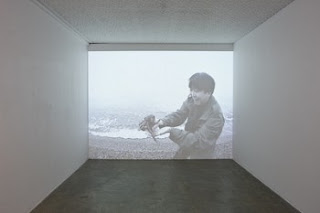
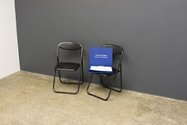
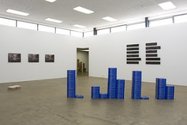
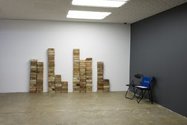
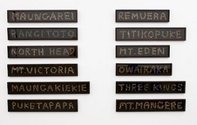
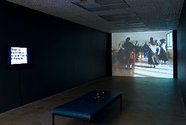
 Two Rooms presents a program of residencies and projects
Two Rooms presents a program of residencies and projects Advertising in this column
Advertising in this column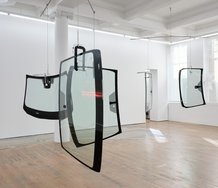
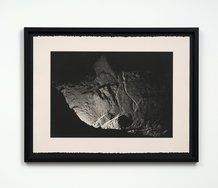
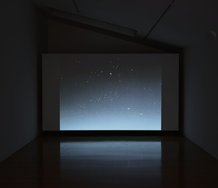
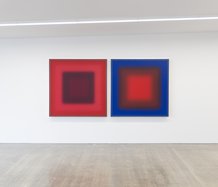
This Discussion has 0 comments.
Comment
Participate
Register to Participate.
Sign in
Sign in to an existing account.